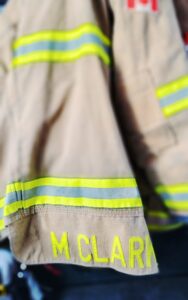Introduction: A Personal Firehouse Story

Picture this: It’s 2 AM at the fire station, and the alarm blares. We leap from our bunks, hearts racing, adrenaline pumping. As a firefighter in Calgary, these moments are common, but they never get easier. In these intense situations, physical fitness isn’t just about looking good; it’s a matter of life and death. But here’s the twist: the same principles that keep me fit for firefighting are remarkably similar to those needed for everyday fitness.
Have you ever felt like your day was a series of alarms, each one pushing you to your limits? Whether it’s juggling work, family, or personal challenges, we all face our own fires to put out daily. And just like in firefighting, staying fit—both mentally and physically—is crucial in handling these pressures effectively.
In this guide, I’ll share with you the fitness lessons I’ve learned from the firehouse and how they can apply to your everyday life. Whether you’re a seasoned athlete or just starting your fitness journey, these insights will help you stay fit under pressure, reminding you it’s about progress, not perfection.
The Firefighter’s Fitness Mindset
Imagine facing a blazing inferno, where every decision counts. In such high-stakes situations, a firefighter’s mental toughness is just as crucial as their physical strength. This same resilience is vital to your fitness journey. It’s about facing each challenge, not as an obstacle, but as an opportunity to grow stronger.
Think of your fitness routine like a fire drill. Each exercise, each rep, is a step towards preparing yourself for life’s unexpected challenges. Just like a fire drill, your workout might feel repetitive or mundane, but it’s this consistent effort that builds the strength and endurance you need when life turns up the heat.
Now, ask yourself this about your fitness journey:
- How do I approach my fitness challenges?
- Do I see them as burdens or as steps towards a stronger self?
Remember, like firefighting, fitness isn’t about being perfect. It’s about being prepared. Prepared to face life’s challenges with resilience, determination, and the knowledge that you’re getting stronger with every step you take.
Physical Training: Lessons from the Firehouse
In the world of firefighting, our physical training is tailored to prepare us for the unpredictable. It’s about being ready for anything, anytime. Here are some key fitness strategies, drawn from my experience at the firehouse, that you can apply to your own routine:
- Functional Fitness: We train for real-life scenarios, not just for looks. Incorporate exercises that mimic everyday activities. Think squats, lunges, and core exercises—movements that build strength for daily life.
- Adaptability: Conditions at a fire scene can change in a heartbeat. Your workout routine should also be flexible. Can’t get to the gym? Do a bodyweight circuit at home. Short on time? A high-intensity interval training (HIIT) session can be just as effective.
- Consistent Training: Just like we consistently train to keep our skills sharp, regular exercise is key. It’s not about one intense workout; it’s about steady, ongoing effort. Even on busy days, a short workout is better than none.
- Teamwork Exercises: Much like fighting fires, fitness can be more effective (and fun) with a team. Partner workouts or group fitness classes can provide the motivation and support you need to keep going.
- Variety in Training: We never know what kind of situation we’ll encounter next, so we train for everything. Apply this to your fitness regime by mixing cardio, strength, flexibility, and balance training.
As you integrate these strategies, remember to listen to your body. Push yourself, but also recognize when to rest. It’s this balance that builds sustainable fitness, helping you stay ready for whatever life throws at you.
Nutrition on the Go: Fueling for Performance
As a firefighter, we often squeeze meals into brief moments of calm amidst the chaos. The same can be true for anyone in today’s fast-paced world. Here’s how you can fuel your body effectively, even on your busiest days:
1. Plan: Just like we check our equipment before a call, planning your meals can save you in crunch times. Preparing healthy snacks or meals in advance ensures you’re not reaching for unhealthy options when hunger strikes.
2. Hydration is Key: Fighting fires is draining, and so is your daily grind. Staying hydrated isn’t just about quenching thirst; it’s about keeping your body at peak performance. Aim to drink water throughout the day, not just when you’re thirsty.
3. Quality Over Convenience: It’s tempting to grab fast food between tasks, but like choosing the right gear for a fire, the right nutrients make all the difference. Opt for whole foods—fruits, vegetables, lean proteins, and whole grains.
4. Listen to Your Body: Just like reading the signs of a fire, learn to read your body’s signals. Eat when you’re hungry and stop when you’re full. It’s about fueling your body, not just filling it.
Reflect on your current eating habits:
- Are you planning your meals, or are you often resorting to whatever is available?
- Do you prioritize hydration as part of your daily routine?
Good nutrition is like the right fire strategy: it requires thought, preparation, and sometimes, the discipline to resist the easier option. But the payoff is immense—better energy, improved health, and a body that’s ready for anything.
Recovery and Resilience: The Firefighter’s Approach
After a demanding shift battling flames, recovery is essential. This is true for any fitness regime as well. Here’s how to incorporate the firefighter’s approach to recovery and resilience into your routine:
1. Prioritize Rest: Just like we must be well-rested to be ready for the next call, your body needs rest to repair and strengthen. Ensure you’re getting enough sleep and consider incorporating rest days into your fitness routine.
2. Stress Management: In firefighting, managing stress is critical. The same goes for life. Techniques like deep breathing, meditation, or even a simple walk outdoors can reduce stress levels, improving overall well-being.
3. Active Recovery: On days off, we don’t just sit around. Active recovery, like light jogging, yoga, or stretching, can help keep your body in motion while still allowing it to recover.
4. Listen to Your Body: Just as we listen for the crackling of fire to gauge its direction, listen to what your body tells you. If you’re feeling worn out or sore, it might be time to ease up and focus on recovery.
Reflect on your current fitness & life recovery practices:
- Are you giving your body enough time to rest and recuperate?
- How do you manage stress and its impact on your physical health?
Remember, resilience in fitness, like in firefighting, isn’t about pushing through pain or exhaustion. It’s about understanding and respecting your body’s limits, giving it the care it needs to bounce back stronger.
Community and Support: The Firehouse Team Spirit
In the firehouse, we rely on each other not just for safety, but for motivation and support. This sense of community is also crucial in your fitness journey. Here’s how to harness the power of community in your pursuit of fitness:
1. Find Your Fitness Crew: Just like a fire crew relies on each other, find a group or a workout buddy who shares your fitness goals. This camaraderie can make workouts more enjoyable and keep you accountable.
2. Sharing Challenges and Triumphs: In the station, we share stories of tough calls and successful rescues. Similarly, share your fitness challenges and achievements with your support group. Celebrating your successes and learning from setbacks together can be incredibly motivating.
3. Group Workouts and Classes: taking part in group workouts or fitness classes can provide a sense of belonging and shared purpose, much like working together in a fire team.
4. Online Communities: If you can’t find a local group, online fitness communities can be a great resource for support, advice, and encouragement.
Reflect on your current support system:
- Do you have someone who supports your fitness journey?
- How can you foster or find a community to enhance your fitness experience?
Remember, just like in firefighting, fitness is not a solo journey. It’s about being part of something bigger, where the support and encouragement of others lift you up and pushes you forward.
Conclusion: Embracing the ‘Progress, Not Perfection’ Philosophy
As we’ve journeyed from the firehouse to everyday life, we’ve explored how the principles of firefighting can guide your fitness journey. From the resilience and adaptability required in high-pressure situations, to the importance of nutrition, recovery, and community support—each element plays a crucial role in building a sustainable fitness regime.
But remember, the most important lesson is this: It’s about progress, not perfection. Just like firefighting, where every situation is different and requires a unique approach, your fitness journey is your own. It’s not about comparing yourself to others or striving for an unattainable ideal. It’s about making steady, incremental improvements, celebrating your successes, and learning from your setbacks.
So, as you go forward, take these lessons to heart. Embrace the challenges, lean on your support system, and, above all, be patient and kind to yourself. Your fitness journey is a marathon, not a sprint, and every step you take is progress.
Remember, just like in the firehouse, what matters most is showing up, doing your best, and being ready to face whatever comes next with strength, resilience, and a positive mindset.
Are you ready to take the next step in your fitness journey with the spirit of a firefighter? Let’s embrace progress, not perfection, and see how far we can go together. Get Started Today First Month is Free!

